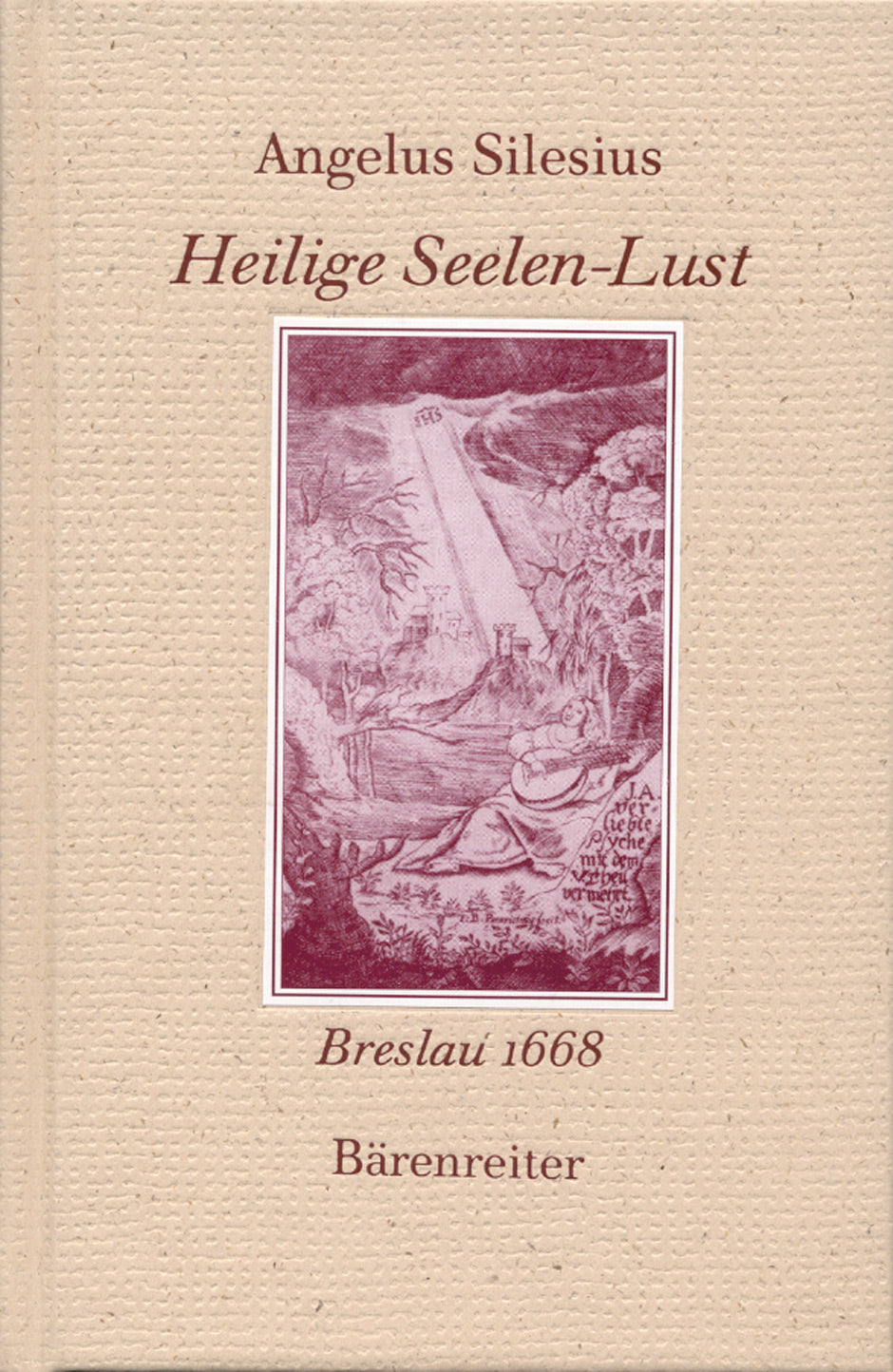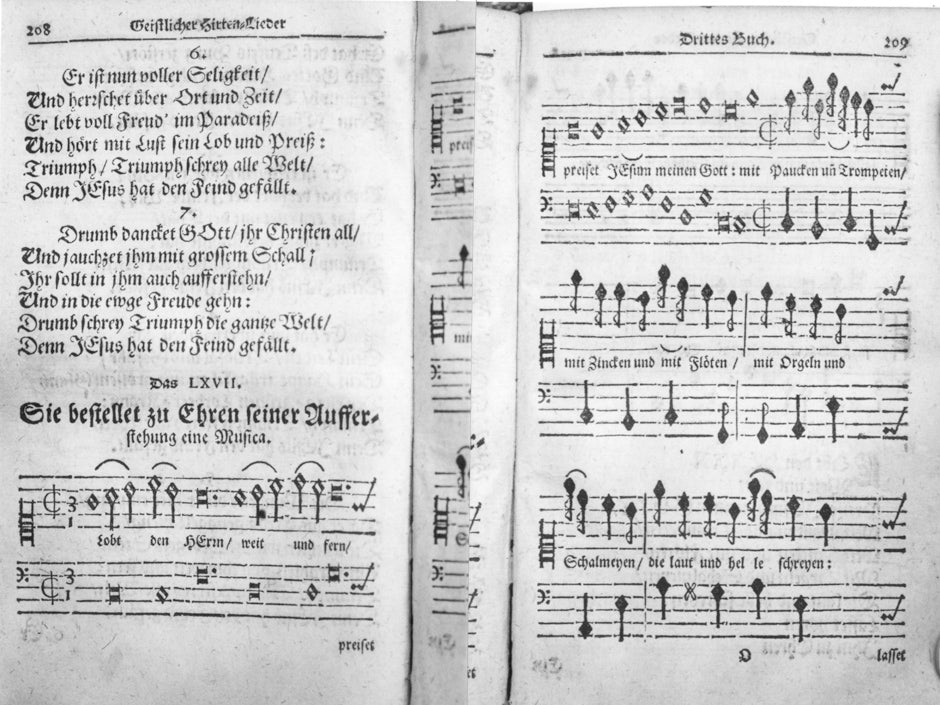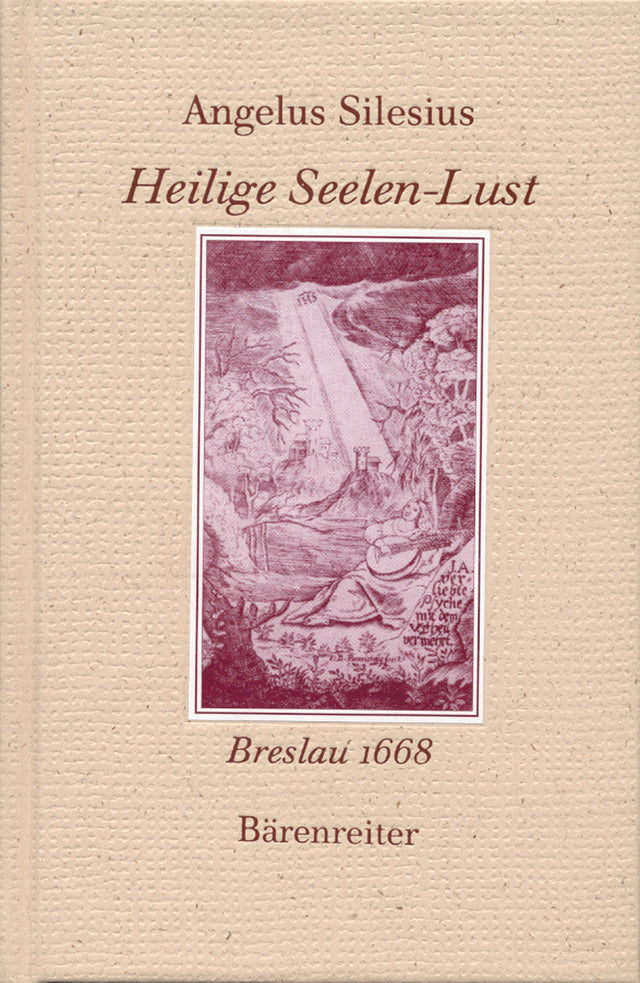Silesius: Heilige Seelen-Lust
Documenta musicologica I/41
In stock and typically ships within 1 business day.
- Binding: Hardcover
- ISBN:
- Size: 4.5 x 6.7 inches
- Pages: 740
Description
Angelus Silesius‘ "Heilige Seelen-Lust", ein herausragendes Zeugnis der Frömmigkeit and Musikkultur im 17. Jahrhundert, enthält über 200 Gedichte, zum Teil mit Melodien. Wiedergegeben wird hier die vollständige fünfteilige Ausgabe von 1668.
Sei es unter dem Beinamen "Angelus Silesius " (Der schlesische Engel) or unter seinem Geburtsnamen Johannes Scheffler (1624-1677) – der Barockdichter aus Schlesien ist Christen beider Konfessionen gleichermaßen bekannt, sein Rang unter Literaturwissenschaftlern, Theologen and Hymnologen unangefochten. Einige Lieder des Gesangbuches "Heilige Seelen-Lust" aus dem Jahr 1668 sind längst über den gottesdienstlichen Rahmen hinaus bekannt geworden. Seit dem 17. Jahrhundert, als Scheffler mit seinen Texten offenbar die spirituelle Grundbefindlichkeit seiner Zeit traf, sprechen sie Menschen sowohl religiös als auch ästhetisch an. So wurde "Ich will dich lieben, meine Stärke" (im "Evangelischen Gesangbuch" and im "Gotteslob" vertreten) unzählige Male vertont and ist inzwischen Bestandteil des kulturellen Gedächtnisses. Eine gefühlsbetonte, mystische Frömmigkeit, die sich auf die Person Christi konzentriert, spiegelt dieses Lied ebenso wider wie etwa das bekannte "Liebe, die du mich zum Bilde" and viele andere. Die Melodien zu 184 der insgesamt 205 Gedichte komponierte Georg Joseph, der als Musiker beim Fürstbischof von Breslau in Diensten stand. Entsprechend der subjektiven Haltung der Dichtungen sind sie als anspruchsvolle Sololieder mit Generalbass-Begleitung gestaltet. Die Lieder von Scheffler and Joseph sollten die Affekte der Ausführenden and Zuhörer erwecken, ihre Liebe, ihre Sehnsucht and ihre Freude an Gott – and an der Musik.
Contents:
- Zu Anfang ein Bild - das Frontispiz
- Zu Leben and Werk Johann Schefflers
- "Inniglich and lieblich seuffzen"
- Das Herz bewegen
- Zu Aufbau and Entstehungsgeschichte der "Heiligen Seelen-Lust"
- Melodien wie Gewürze bei den Speisen
- Die Seele - ein Lautenspiel Gottes
- Von seraphischer Liebe and cherubinischer Gemütsforschung
- Anmerkungen
- Moderne Ausgaben
- Literatur
- Zu einzelnen Liedern
- Heilige Seelen-Lust -Reprint der fünfteiligen Ausgabe Breslau 1668-
Publishers use a lot of words to describe what they sell, and we know it can be confusing. We've tried to be as clear as possible to make sure you get exactly what you are looking for. Below are descriptions of the terms that we use to describe the various formats that music often comes in.
Choral Score
A score for vocalists that only contains the vocal lines. The instrumental parts are not there for reference. Generally, cheaper than a vocal score and requires multiple copies for purchase.
Facsimile
Reproductions of the original hand-written scores from the composer.
Full Score
For ensemble music, this indicates that the edition contains all parts on a single system (there are not separate parts for each player). In larger ensembles, this is for the conductor.
Hardcover
Hardbound. Generally either linen-covered or half-leather.
Orchestral Parts
Similar to a wind set, this is a collection of parts. In the case of strings, the numbers listed are the number of copies included, though generally these are available individually (often with minimum quantities required).
Paperback
When publishers offer multiple bindings (e.g. hardcover) or study scores, this is the "standard" version. If you're planning to play the music, this is probably what you want.
Performance / Playing Score
A score of the music containing all parts on one system, intended for players to share. There are not separate parts for each player.
Set of Parts
For ensemble music, this indicates that there are separate individual parts for each player.
Solo Part with Piano Reduction
For solo pieces with orchestra, this is a version that contains a piano reduction of the orchestra parts. For piano pieces, two copies are typically needed for performance.
Study Score
A small (think choral size) copy of the complete score meant for studying, and not playing. They make great add-ons when learning concertos and small chamber works.
Vocal Score
A score prepared for vocalists that includes the piano/organ part or a reduction of the instrumental parts.
Wind Set
For orchestral music, this is a collection of wind and percussion parts. The specific quantities of each instrument are notated.
With Audio
In addition to the printed music, the edition contains recordings of the pieces. This may be an included CD, or access to files on the internet.
With / Without Fingering (Markings)
Some publishers prepare two copies - a pure Urtext edition that includes no fingering (or bowing) suggestions and a lightly edited version that includes a minimal number of editorial markings.




